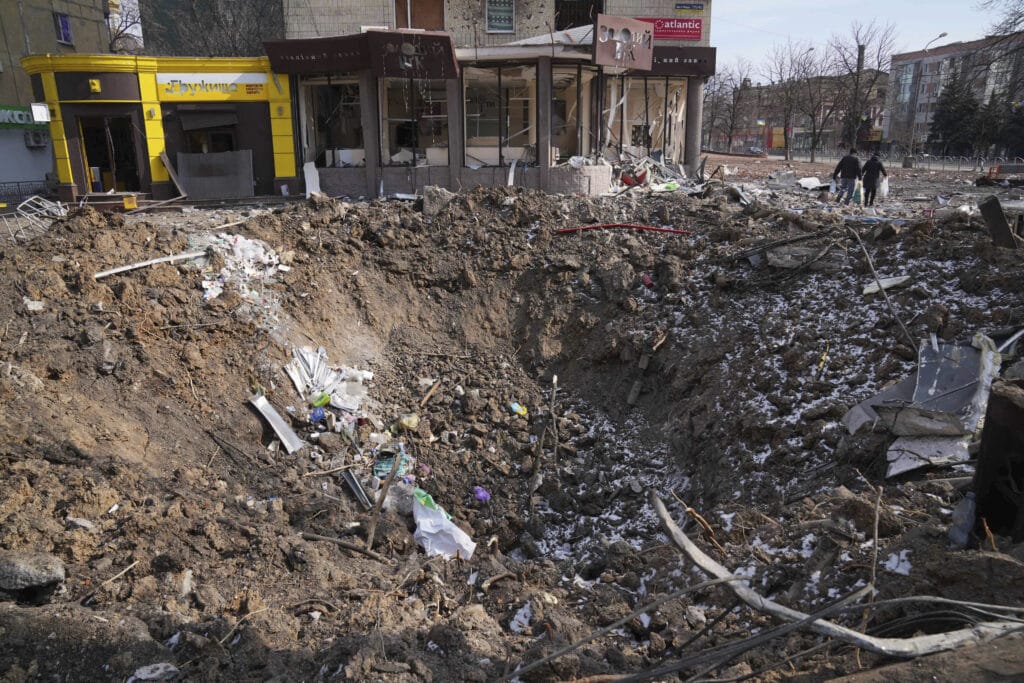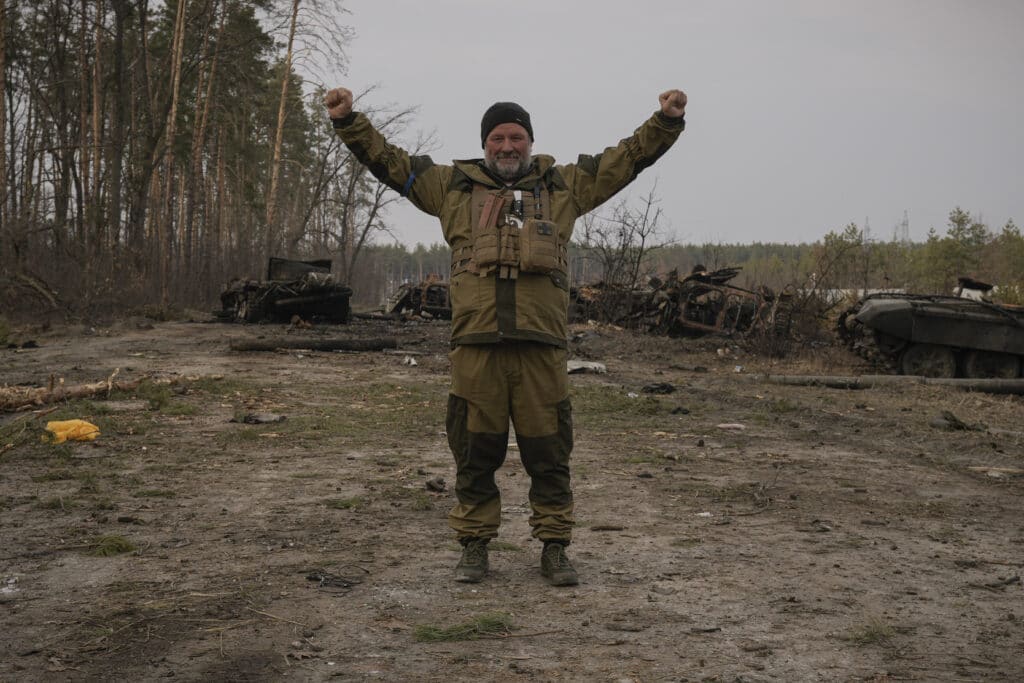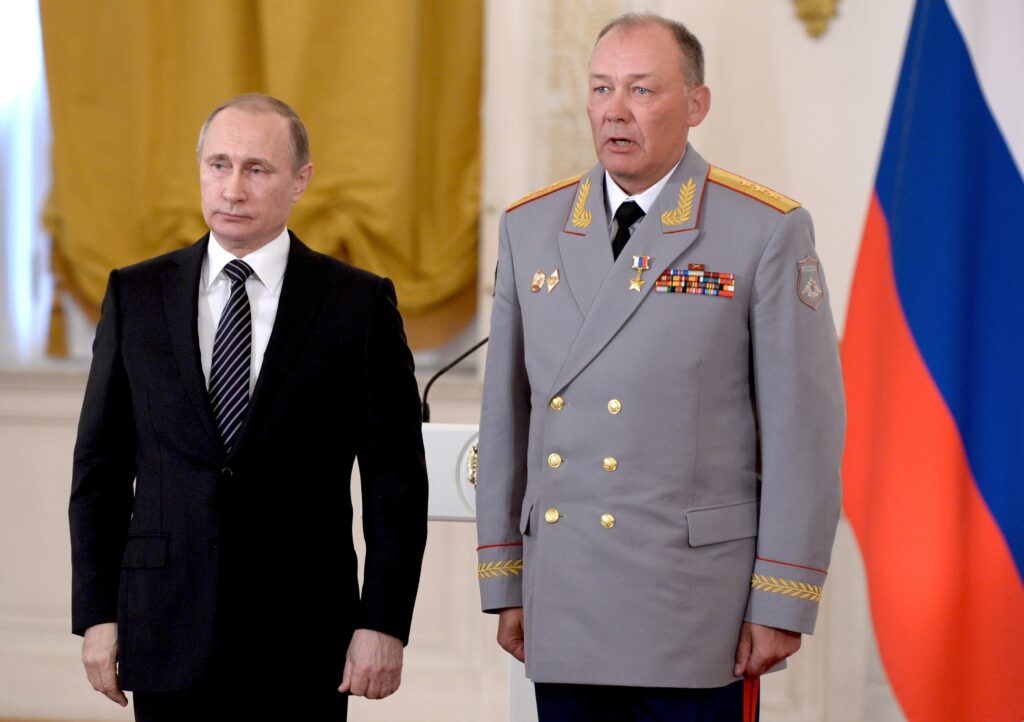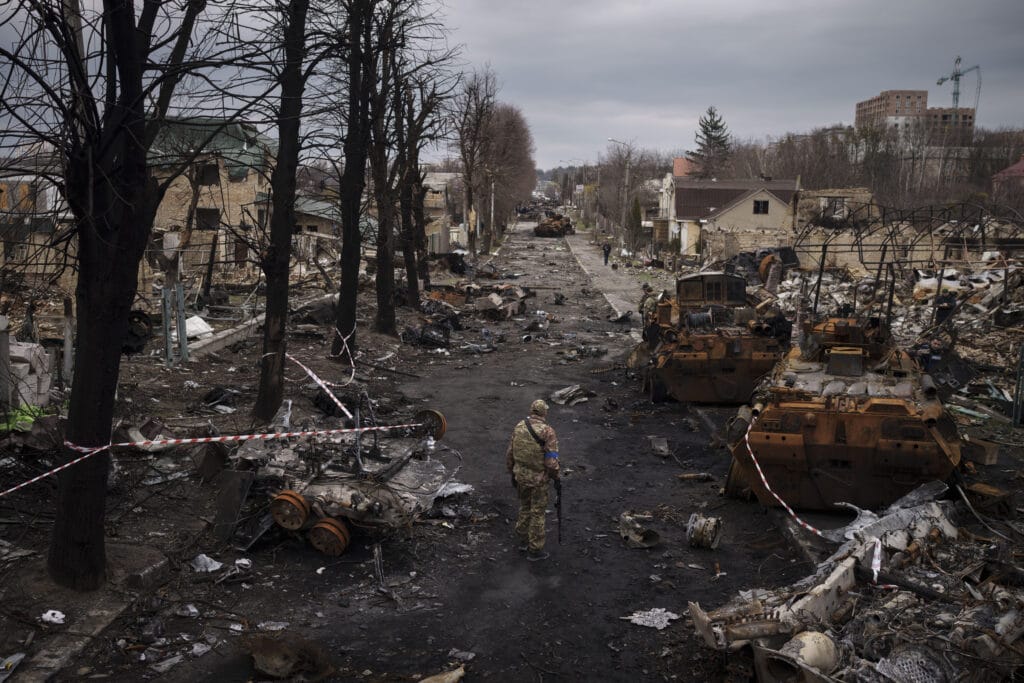Unable to get very far the first seven weeks of the war, Russia is shifting its strategy toward eastern Ukraine. Highways are jammed with Russian convoys headed in that direction. The Associated Press has the story:
‘Myth about the invincibility of the Russian military’
(AP) Russia is readying a massive, new offensive in eastern Ukraine, hoping to reverse its fortunes on the battlefield after a catastrophic start to seven weeks of war.
A long convoy of combat vehicles has jammed highways across northeastern Ukraine in preparation for an attack that could begin within days, and the Kremlin has named a general known for overseeing Moscow’s campaign in Syria to lead it.
A look at Russia’s military objectives and challenges it faces.

A BOTCHED BLITZ
A failed Russian attempt to storm Kyiv and other big cities took a heavy toll in personnel and equipment, boosted morale in Ukraine and allowed it to rally broad international support.
“The myth about the invincibility of the Russian military as the second-most powerful in the world has been shattered to much surprise of the Ukrainians themselves,” Ukrainian military expert Oleh Zhdanov told The Associated Press.
The flow of Western weapons into Ukraine and a growing popular resistance to Russian aggression will further raise the costs of war for Moscow.
President Vladimir Putin badly needs a quick battlefield victory to find an exit from what increasingly looks like a disastrous quagmire.
Russia’s focus is turning to Ukraine’s industrial heartland, known as the Donbas, where Moscow-backed separatists have been fighting Ukrainian government forces since the conflict there erupted shortly after the Kremlin’s 2014 annexation of Ukraine’s Crimean Peninsula.
“In the first round, Russia has lost face both politically and militarily,” Zhdanov said. “It has done every possible stupid thing in the careless hope for a blitz … but it will make the Russian attack in the next round even more furious.”

REFOCUS AND REDEPLOYMENT
After their retreat from Kyiv, Chernihiv and Sumy, Russian forces pulled back to the territory of Belarus, Moscow’s ally, as well as areas in western Russia to be rearmed and resupplied for the new offensive.
Retired British Gen. Sir Richard Barrons estimated the Russians have “probably lost about 25% of the ground forces they started out with in the sense that those have been units that have become noncombat effective.”
“So they’re amalgamating them, they’re refitting them, they’re reinforcing them and then moving them around,” Barrons told AP.
Russia also was trying to move additional equipment from elsewhere and mobilize reservists in a desperate attempt to build a sufficient attack force, said Barrons, a co-chair of the consulting group Universal Defence & Security Solutions.
“They’ve had a beating, and they will have only a few weeks to get better,” he said.
Recently, Russian troops have been seen rolling into eastern Ukraine to move into attack positions. A convoy stretched for about 13 kilometers (8 miles) on a highway east of Kharkiv, heading south toward Ukrainian lines near Izyum, a strategic road junction.
At the same time, Russian forces rushed to crush remaining pockets of Ukrainian resistance in Mariupol after besieging the vital Sea of Azov port for nearly 1 1/2 months.
The offensive is expected to start once Mariupol is fully under Russian control, and the troops pulled from areas near Kyiv, Chernihiv and Sumy complete their redeployment.

WILL A NEW COMMANDER MAKE THE DIFFERENCE?
Gen. Alexander Dvornikov was appointed the new military commander for the campaign in Ukraine. The 60-year-old soldier is one of Russia’s most experienced officers, credited with leading Moscow’s forces to victory in Syria in a ruthless campaign to shore up President Bashar Assad’s regime in a civil war that saw entire cities flattened and millions displaced.
In 2016, Putin awarded Dvornikov the Hero of Russia medal, one of the country’s highest awards, and named him the chief of the Southern Military District, commanding units in southwestern Russia.
Dvornikov’s appointment is seen as reflecting the Kremlin’s awareness to quickly improve poor coordination among various forces that hampered previous military efforts. Skeptics point out, however, that the Syrian campaign involved a relatively small number of troops, unlike the massive operation in Ukraine.
TRYING NEW BATTLEFIELD TACTICS
Ukrainian and Western experts expect the Russians to try to encircle Ukrainian forces in Donbas with a pincer movement by advancing from Izyum in the north and Mariupol in the south.
Some predict Russia also may try to use its forces north of Crimea to try to capture the industrial hubs of Zaporizhzhia and Dnipro on the Dnieper River, effectively cutting Ukraine in half.
Barrons said the Russians are focusing on the east ”instead of trying to do three or four big things at once and spreading the air power and the logistics.”
“The key conundrum is, can the Russians muster enough force … good enough to overwhelm a very good Ukrainian defensive position by sheer weight of brutality” by concentrating firepower and troops in a few key locations, he said.
WILL RUSSIA’S LOGISTICAL PROBLEMS PERSIST?
Despite a new commander, the offensive will likely face the same logistical challenges Russian troops encountered early in the campaign.
During the botched attempt to storm Kyiv, Russian convoys stretched along highways leading to the capital, becoming easy prey for Ukrainian artillery, drones and scouts.
Supporting the operations in the east could be equally hard, with Russian supply lines likely to face hit-and-run raids, helped by the arrival of spring as foliage offers natural cover for Ukrainian scouts and guerrillas.
Control of the skies also has been a problem, with Ukrainian air defense assets continuing to shoot down Russian warplanes, making it more difficult for ground troops to advance. In recent days, Russia has launched strikes on Ukrainian long-range air defense systems in apparent preparation for the offensive.
“If the Russians learned the lessons of their failure so far and could concentrate more force and could connect their air force to the ground forces better and could sort the logistics out, then they might start to overwhelm the Ukrainian positions eventually, although I still think it would be a battle of enormous attrition,” Barrons told AP.
MORE FAVORABLE TERRAIN FOR RUSSIA?
During the eight years of fighting separatists in the east, Ukrainian forces have built multilayered defenses, which Russian troops failed to break despite persistent attacks since the invasion began Feb. 24.
“They’ve been fighting in these current positions in the Donbas for about eight years, so they’re very seasoned and they’re very well prepared,” Barrons said of Ukrainian forces.
He noted, however, that “this will be different because the Russian onslaught will be potentially very much greater” and the east’s flat terrain could give the Russians an edge.
“The sort of ambush tactics the Ukrainians were highly successful with around Kiev may not apply in the Donbas,” Barrons said. “And if the Russians were capable of maneuvering their armor so tanks, armored infantry and armored artillery at speed, they could get behind the Ukrainian position. It is going to be a much harder, bigger fight than we’ve seen so far.”
Ukraine has pleaded with the West for warplanes, long-range air defense systems, heavy artillery and armor to counter a massive Russian edge in firepower.
“There is a battle of time and space between the Russians and Ukrainians for the Russians to muster enough force and the Ukrainians to get the weapons that they need and rehearse themselves for what will be a bigger and slightly different battle, and I think it is finely balanced,” Barrons said.
FOR PUTIN, A RACE AGAINST TIME
After earlier battlefield failures, Putin desperately needs a quick success in the east.
Battered by Western sanctions, Russia lacks financial resources for a protracted conflict. If the fighting drags on, it will inevitably worsen the economy and could bring social tensions, eroding the Kremlin’s support base.
The military already has put its most capable combat units in the campaign, and continued fighting will likely force it to call up more reservists and throw fresh conscripts into combat — moves that could be extremely unpopular.
Putin could be hoping to quickly expand the territory under separatist control in the east, then try to force Ukraine into concessions in negotiations to wrap up the campaign and spin it as victory.
—-
Associated Press writers Yuras Karmanau in Lviv, Ukraine, and Danica Kirka in London contributed.







